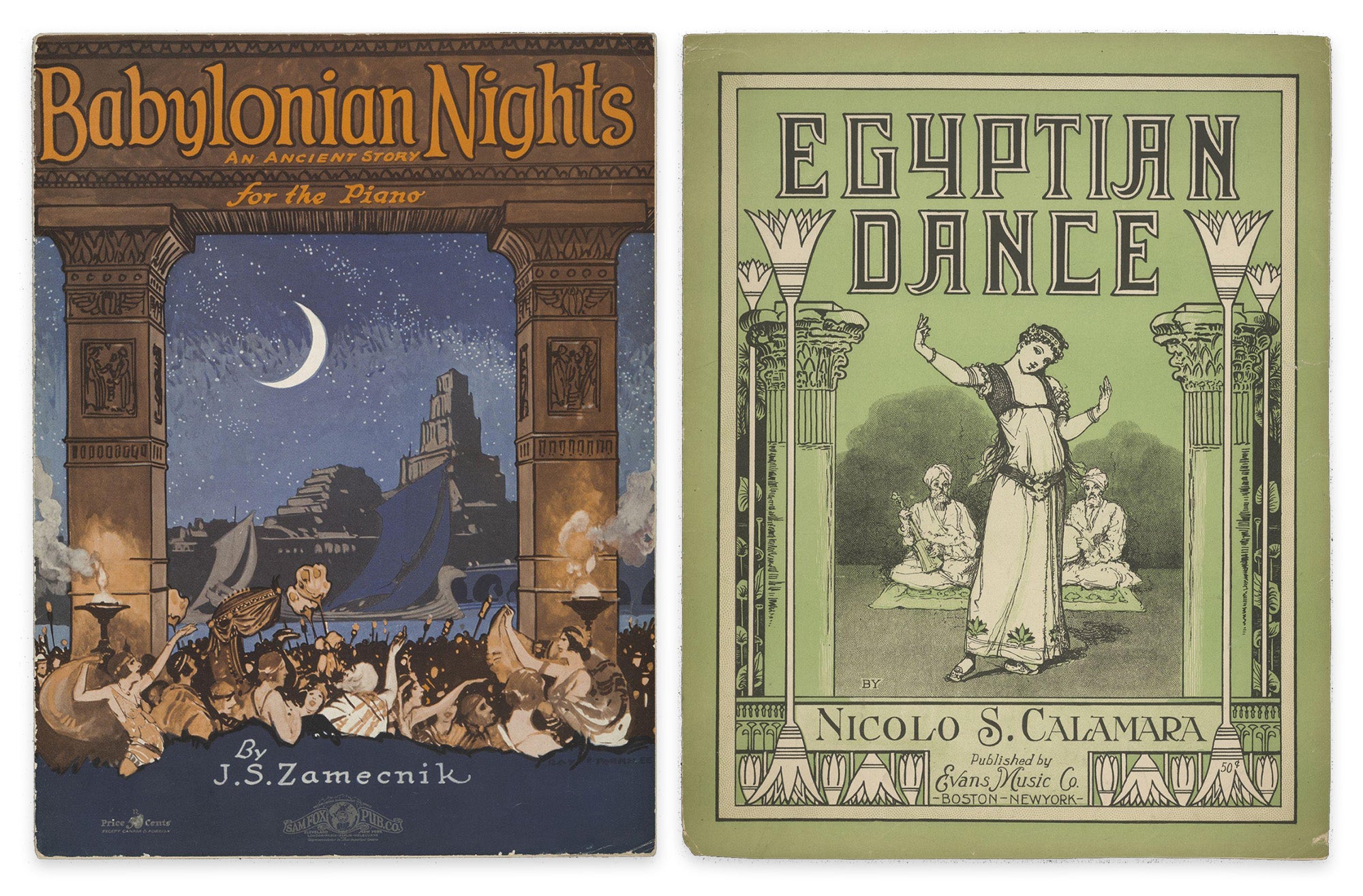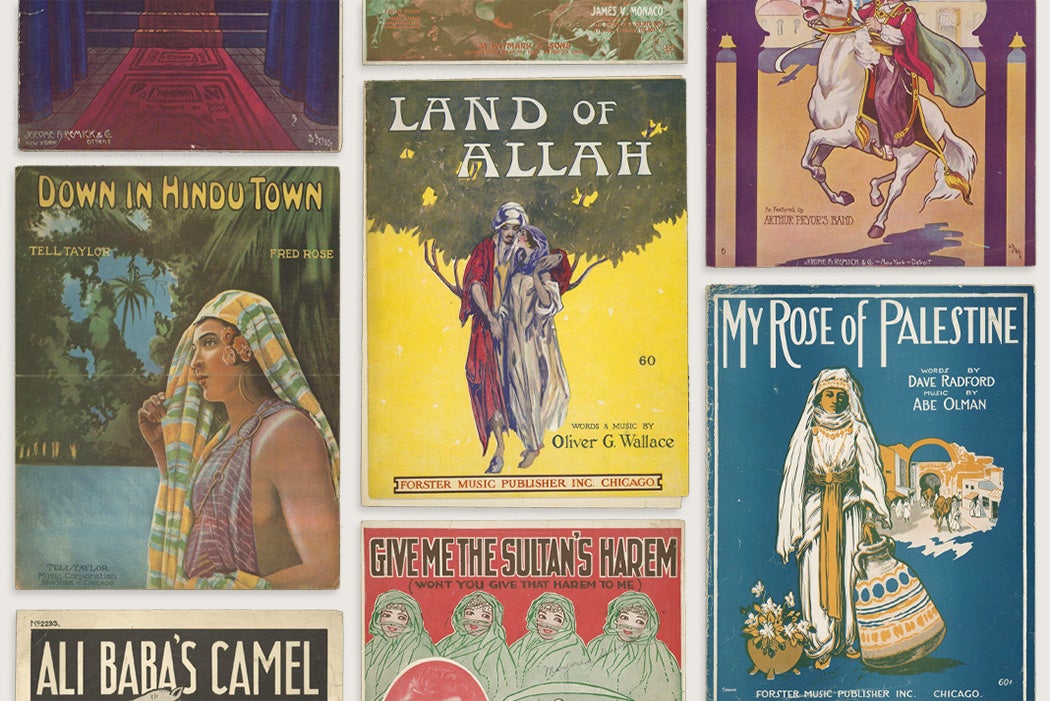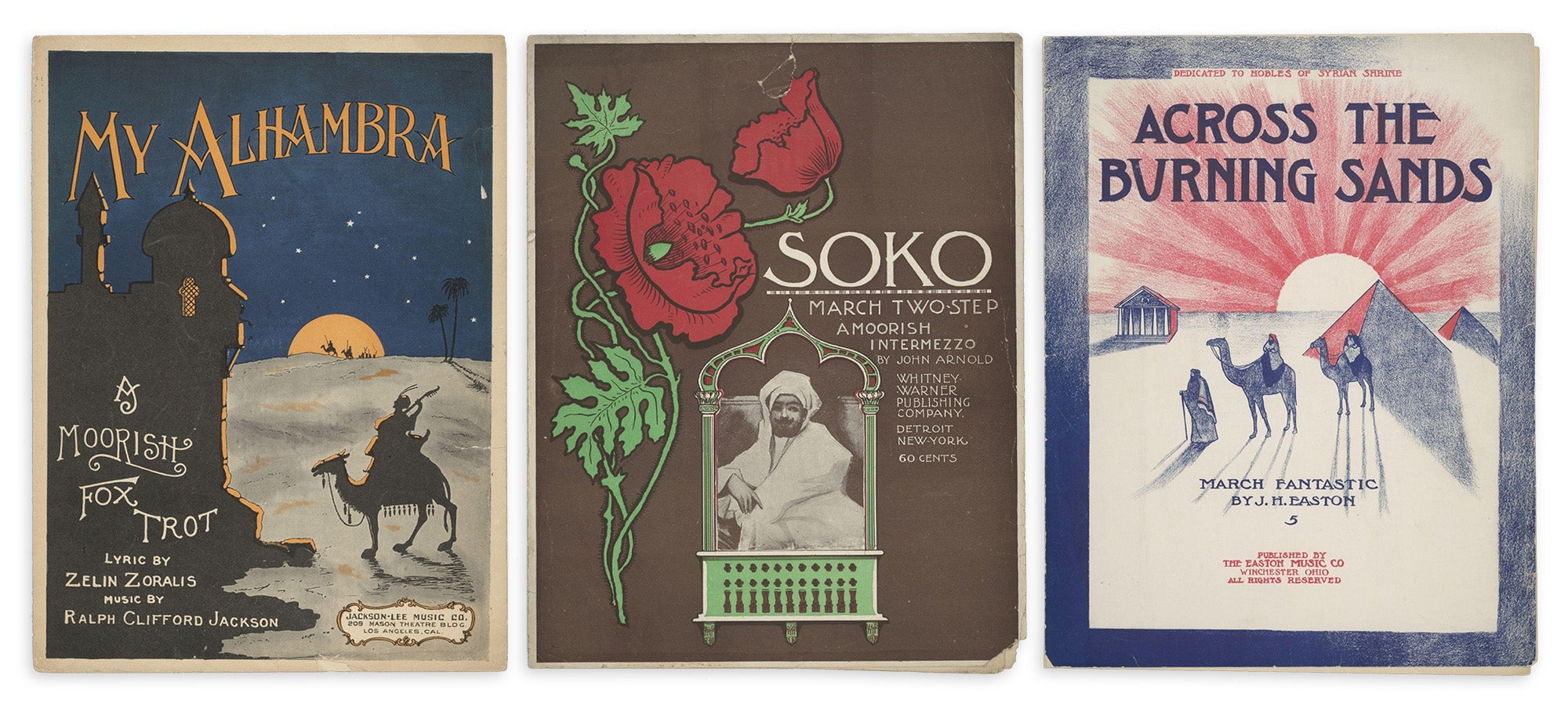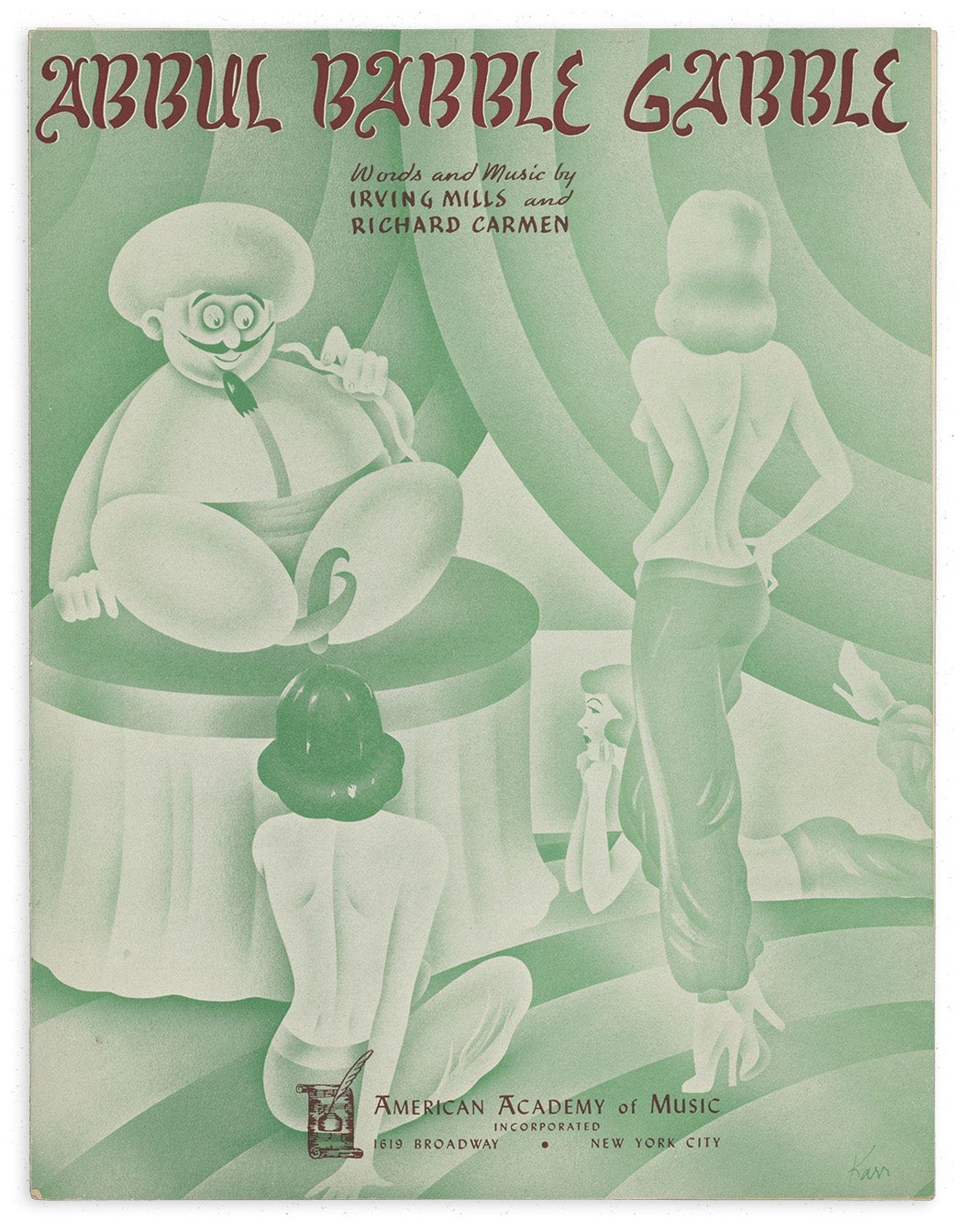Sam Bessen is the curator of sheet music and popular culture at Johns Hopkins Sheridan Libraries. Among the first archival materials he was able to process and make publicly available through the Johns Hopkins Digital Collections on JSTOR, the Collection of Middle East-Inspired Sheet Music offers a snapshot into the West’s exoticization and misrepresentation of the East at a particular point in time. In this interview, Bessen discusses sheet music as one of the first forms of mass popular music in a time before radios and records and how studies of these materials intersect with many disciplines and other areas of research.
Morgan Godvin: Why sheet music?
Sam Bessen: The radio was not popularized until after the First World War. The record player wasn’t available until the 1900s, television and cinema were not available until the 1930s. Before those inventions, if people wanted to experience entertainment in their home, they had to make it themselves. A lot of, especially middle-class, families would have had access to a piano. A lot of young women were expected to learn how to play the piano. This music was designed to be sold to folks so that they could perform it in their home.
Sheet music has been produced in the United States ever since the colonists arrived. A lot of the early music that was produced was sacred music or classical music. Popular music is the stream that doesn’t fit into either category. It’s not meant for religious purposes nor is it higher-brow Beethoven. It’s designed to appeal to as many people as possible.
People would compile their sheet music into beautifully bound volumes. Those are the first “Spotify Playlists” that we have!
What is the Collection of Middle East-Inspired Sheet Music?
This is a collection of about 600 popular songs. These were published mostly in the United States and in England, with some from elsewhere in Europe as well. The dates of the collection are 1839 through 1978, with the bulk of the music being published in the first couple decades of the twentieth century.
We were incredibly excited to make this available through JSTOR because not only is the music interesting, but the covers of the collection are, too. There’s really so much that you can learn just from the covers of the sheet music.
This collection’s strength is its potential to enhance, through popular culture, our understanding of Western perceptions of the East.
How did you acquire the collection and how did it end up on JSTOR?
We purchased this collection from a collector who had spent a long time amassing this music, and he did so to document Western fascination with the East through popular music as a way of highlighting one of the many different forms of Orientalism. He was fascinated with how it was popularized through sheet music in the nineteenth and twentieth centuries.
We acquired it in 2011 and began the digitization process in 2021, just to get it onto JSTOR. My colleagues Lael [Ensor-Bennett] and Don [Juedes] had already established a partnership with JSTOR, and thought this collection would make a fantastic addition because it is so visually-focused, the covers are so rich.
What are people interested in when it comes to this collection?
The disciplines interested in it have spanned from the visual arts to international studies and more.
If we’re just looking at the covers, it’s the visual style. Art Deco, Art Nouveau, minimalist, abstract, etcetera. Another approach is the language on the covers. The subtitles they use to describe the music are often xenophobia and racist. They may say something like “Turkish Waltz” or “Moorish Waltz” and yet not be Turkish or Moorish at all.
It’s really interesting to see how little they really knew about the style on a whole. A song will be called “Burning Sands,” and the image will have Islamic architecture, and then Egyptian pyramids, and then it’ll call itself, like, a Lebanese waltz. They can be jarring, both visually and the titles.
How do you handle the fact the content can be so problematic, racist and xenophobic?
Whenever we have these collections with harmful content, we add a content warning. In particular, with teaching with the collection, whenever I’m teaching in person with these collections, it’s always a conversation we have with the students, to put it into context, talk about why we have it. We encourage them to take breaks, or stop working on it if they encounter something they’d rather not work with. I often need to take breaks when I work with these collections.
We have a reparative description working group where we’re looking at archival records and looking at the language that was used. Sometimes it’s the dealer’s description, or the title of the work itself that is racist. We’re finding ways to look at these records and repair the descriptions and language that the people described in our collections used to describe themselves, which of course changes over time.
We’ve done a large project to identify any of the minstrel music in the collection. Minstrelsy was a really racist form of popular entertainment from 1820 to around 1920. We have this big description on our Lester Levy page, our main collection, to describe what our process was, why we undertook it, and what the results were.
How are people using the collection?
We’ve had a lot of students engaging with it through the deeper content on the cover. So looking at how architecture is displayed, looking at how people are displayed, how women are displayed. There are many hyper-sexualized depictions of women that were meant to kind of draw people into this music. There’s often depictions of Middle Eastern men as either unintelligent or violent.
 What research has been inspired by the collection?
What research has been inspired by the collection?
We have a two-year fellowship at Hopkins called First-Year Fellows, where freshmen can propose a research study into one of our collections. A student last year did an online exhibit examining the racism and sexism on the covers.
A student this year, a pianist, looked into how the music and how the covers do or don’t interact with each other. She’ll look at something that’s described as Egyptian, and then play it. Oftentimes it’s trying to sound stereotypically Middle Eastern, and sometimes it’s just straight up American popular music with a cover that is the twentieth-century version of “clickbait.”
Your entire position focuses on sheet music. What else does Hopkins have in store for us?
I’m also building our collections in jazz right now. We recently acquired the Billie Holiday collection, and I’m working on that, too. I divide my time between focusing on sheet music and focusing on wider popular culture.
How do these analyses of popular culture intersect with other research projects?
There was a class on youth and democracy, for example, and I pulled out a couple different versions of “The Star-Spangled Banner” and music from the Civil War and the First World War, written either about children or from the perspective of children. We were looking at, “How are children evoked in wartime? How was that commodified?”
Weekly Newsletter
Popular music was mass produced and sold to hundreds of thousands of people! These things influenced the public consciousness.
I love facilitating archival visits to Special Collections at Hopkins, where a class will be studying something completely unrelated to music and I can choose songs and show them: “This is how popular music relates to that.”
What are you looking forward to in the years ahead?
AI tools to make our collections more accessible. I’m excited to see if there are tools that could be applied to both the music and the covers. Napoleon’s expedition to Egypt, the discovery of King Tut’s tomb, these things spurred major headlines and interest in the United States and Europe. Could we analyze which words are used to describe the music during different time periods in relation to major events? Could we see if true Middle Eastern music scales are being used in the music, do the title and music match? Previously, that’s all been done manually.
Explore the collection on JSTOR here.








